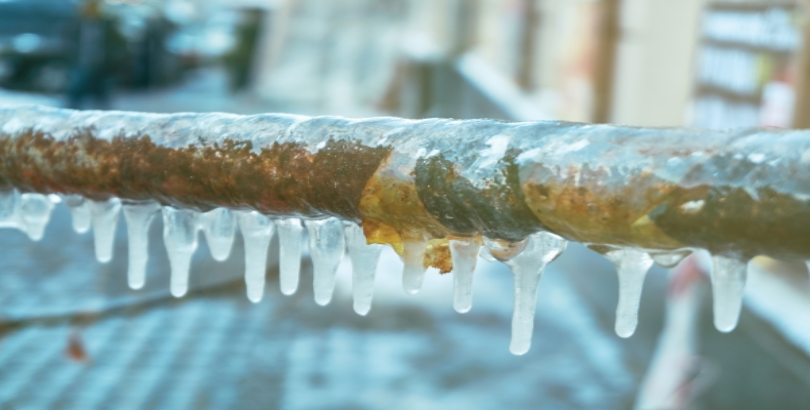
A common fear for homeowners during the winter months is that their pipes may burst, which can cause extensive water damage throughout your home and lead to costly repairs. Unfortunately, there’s no way to predict when a pipe may burst, or stop cold weather, especially in Canada.
A better approach to dealing with how cold weather that may affect your plumbing is to work with nature, and not against it. Learning what causes pipes to burst and how to prevent it from happening can save you a lot of stress, anxiety and money.
Why Do Frozen Pipes Burst When They Thaw?
When water freezes, it expands. When water freezes inside pipes, it increases the pressure inside the pipe and can cause a blockage within the pipe. Surprisingly, it’s actually the thawing process that can cause a pipe to burst. This can happen when pressure continues to build as the newly thawed liquid begins to flow and forcefully pushes against the still-frozen areas within the pipe. In other instances, ice can push the water toward the faucet, causing the pipe to burst. Due to the gravitational design of pipes, that added pressure downstream can push the pipe material to its limit, and breaking point (literally).
And because outside temperatures can fluctuate often and unexpectedly, these changes that cause freezing and melting can cause your pipes to contract and expand at a rate that they cannot keep up with.
Do Frozen Pipes Always Burst?
Whether they’re in the process of thawing or expanding, frozen pipes don’t always burst. But because the thawing process can put added stress on pipes and cause damage to plumbing, taking steps to avert a possible rupture is advised. While you can find ways to slowly thaw your pipes on your own, calling in a plumbing expert is the best way to deal with frozen pipes safely.
Preventing Frozen Pipes
To get ahead of the cold, there are several things you can do to prepare your pipes, including:
- Drain and shut off unused water lines and hoses.
- Insulate your outdoor pipes.
- Insulate colder areas of your home.
- Keep your home temperature consistent and no lower than 13 ºC.
- Open cabinets and closet doors to allow warm air to reach your pipes.
- Make sure your doors and windows are properly sealed.
The biggest factor in preventing frozen pipes is keeping the indoor temperature at a safe and consistent level. But this can be easy to overlook in more neglected areas of your home, such as basements, crawlspaces, and utility rooms.
For more detailed advice on dealing with frozen pipes, check out this how-to guide for preventing frozen pipes.
Preventing Pipes from Bursting
Taking proactive steps to deal with frozen pipes can save you a lot of headaches later. Freezing and thawing water inside your pipes can cause them to rupture, leading to extensive water damage in your home. If you have had issues with frozen pipes in the past, there are steps you can take to minimize the risk in the future. To learn more, contact your local Mr. Rooter. We can perform a complete inspection of your plumbing and make recommendations that can help keep it running efficiently all year long. To get started give us a call us or request an estimate online.

